"Heather is kept lush and vigorous by controlled burning. It is carried out between Autumn and Spring when small sections are burned carefully on a rotational cycle, which can be as little as 7 years where there is very vigorous growth or as long as 25 years where growth is slow.
Ideally, burning will take place when the heather cover is dry, the peat wet and the wind light but constant. This ensures that the fire moves steadily over the peat, burning the plant but leaving the peat bed relatively cool.
The burning cycle creates a pattern of different aged heather. The oldest provides cover for the grouse and other birds; the new shoots, succulent food for birds and sheep. A skilfully burnt moor will have a mosaic of heather and other moor plants of differing ages and the rich variety of wildlife they attract." - Internet
The Skye winter has been long and cold and wet with glorious bursts/days of sunshine to tease and to tantalise! As I type, the sleeting rain is hitting the window with mini hailstones building a hill-like formation against the glass! Not at all conducive to burning heather!
Burning needs to be completed before the end of April
. We had not seen any evidence of burning until last week when down at Glendale Hall, using free wifi, we glanced back to 6 Fasach. And the hills behind were ablaze! What excitement!
"Did ye smell the heather burning Rosemary?" asked cousin Sam in his lilting Gaelic voice. No, the wind was in the wrong direction. "Well, I'll light some for ye." And he does!
Sam and Jane take us to one of the most remote, beautiful and haunting areas we have seen on Skye. Beyond Ramasaig, in a valley (glen) that is long and slopes gently down to the sea, lie the ruins of Lorgill.
"Lorgill was once a thriving community with a dozen or more families. In 1830, at very short notice, they were ordered to leave to make way for tenant farmers and their sheep. With the threat of imprisonment for failing to do so, they had to board a ship at Loch Snizort bound for Nova Scotia, as part of the notorious Clearances." - Clan Walk Guides.
The remnants of walls, homes, even a church are spread throughout the glen
.
Thorburn heritage: Sam leads us to the ruins of a residence of his forebears. The stonework on this ruin is most skilful. The stones are wedged with small pieces of wood. The hearth is beautifully constructed. 1859 is chiseled into a huge exterior stone.
It is time to burn some heather! As it is so damp there is difficulty locating a good patch. This is a 'controlled' burn and Sam is in full command! The initial smell of the heather burning is beautiful - sweet and malt like. Thank you Sam!
Sam's dog watches on - somewhat perplexed. He is called Col - a Thorburn dog name since time immemorial. He is a treasure - 14 years old and completely deaf!
We wander further down Lorgill and explore ruin after ruin. This was a thriving community!
There is discussion about the grave of a religious figure from the past
. Apparently he was buried rings and all. About forty years ago his grave was looted. Sadly, the giant 'headstone' was not replaced centrally. "No respect!" laments Sam. And as the story goes - the looter died 'accidentally' very soon after!
We meander back beside a babbling river. The water is so clear. The environment pristine. And sheep graze contentedly!
As we wend our way back in the farm truck towards Ramasaig we pass the ruins of the Lorgill school. How hard life must have been!
This has been a wonderful afternoon! Such a beautiful place.
Shared history and heritage. Thank you.
Burning the Heather
Sunday, April 12, 2015
 Glendale, Scotland, United Kingdom
Glendale, Scotland, United Kingdom
Other Entries
-
2Glasgow
Feb 1952 days prior Glasgow, United Kingdomphoto_camera2videocam 0comment 1
Glasgow, United Kingdomphoto_camera2videocam 0comment 1 -
3Towards Fort William
Feb 1952 days prior Glasgow, United Kingdomphoto_camera8videocam 0comment 0
Glasgow, United Kingdomphoto_camera8videocam 0comment 0 -
4Towards Eileen A'Cheo - the Misty Isle of Skye
Feb 2348 days prior Fort William, United Kingdomphoto_camera17videocam 0comment 3
Fort William, United Kingdomphoto_camera17videocam 0comment 3 -
5Fasach - Norse for barren land
Feb 2447 days prior Glendale, United Kingdomphoto_camera7videocam 0comment 5
Glendale, United Kingdomphoto_camera7videocam 0comment 5 -
6Glendale
Mar 0142 days prior Glendale, United Kingdomphoto_camera17videocam 0comment 3
Glendale, United Kingdomphoto_camera17videocam 0comment 3 -
7The fickle weather of Skye.
Mar 0538 days prior Glendale, United Kingdomphoto_camera9videocam 0comment 6
Glendale, United Kingdomphoto_camera9videocam 0comment 6 -
8Life in the Glen.
Mar 0835 days prior Glendale, United Kingdomphoto_camera17videocam 0comment 3
Glendale, United Kingdomphoto_camera17videocam 0comment 3 -
9A photography tour with Tom
Mar 1132 days prior Glendale, United Kingdomphoto_camera28videocam 0comment 3
Glendale, United Kingdomphoto_camera28videocam 0comment 3 -
10Neist Point Lighthouse
Mar 1429 days prior Glendale, United Kingdomphoto_camera28videocam 0comment 7
Glendale, United Kingdomphoto_camera28videocam 0comment 7 -
11A time to dye in Skye
Mar 1726 days prior Glendale, United Kingdomphoto_camera19videocam 0comment 3
Glendale, United Kingdomphoto_camera19videocam 0comment 3 -
12Sleat, Lower Breakish and Talisker
Mar 2023 days prior Glendale, United Kingdomphoto_camera14videocam 0comment 0
Glendale, United Kingdomphoto_camera14videocam 0comment 0 -
13The croft at Borrodale
Mar 2419 days prior Glendale, United Kingdomphoto_camera19videocam 0comment 3
Glendale, United Kingdomphoto_camera19videocam 0comment 3 -
14Fishing
Mar 3013 days prior Glendale, United Kingdomphoto_camera20videocam 0comment 0
Glendale, United Kingdomphoto_camera20videocam 0comment 0 -
15Skyeskyns
Mar 3112 days prior Glendale, United Kingdomphoto_camera18videocam 0comment 0
Glendale, United Kingdomphoto_camera18videocam 0comment 0 -
16Pied Beauty on Skye
Apr 039 days prior Glendale, United Kingdomphoto_camera27videocam 0comment 1
Glendale, United Kingdomphoto_camera27videocam 0comment 1 -
17In search of heritage
Apr 048 days prior Glendale, United Kingdomphoto_camera25videocam 0comment 0
Glendale, United Kingdomphoto_camera25videocam 0comment 0 -
18Out and About
Apr 102 days prior Glendale, United Kingdomphoto_camera22videocam 0comment 1
Glendale, United Kingdomphoto_camera22videocam 0comment 1 -
19Burning the Heather
Apr 12 Glendale, United Kingdomphoto_camera24videocam 0comment 1
Glendale, United Kingdomphoto_camera24videocam 0comment 1 -
20A Piper in the Glen
Apr 131 day later Glendale, United Kingdomphoto_camera17videocam 0comment 1
Glendale, United Kingdomphoto_camera17videocam 0comment 1 -
21Tide-wrack and the ever changing Minch
Apr 153 days later Glendale, United Kingdomphoto_camera18videocam 0comment 1
Glendale, United Kingdomphoto_camera18videocam 0comment 1 -
22Last Days
Apr 175 days later Glendale, United Kingdomphoto_camera27videocam 0comment 0
Glendale, United Kingdomphoto_camera27videocam 0comment 0 -
23Farewell to The Isle of Skye
Apr 186 days later Glendale, United Kingdomphoto_camera21videocam 0comment 5
Glendale, United Kingdomphoto_camera21videocam 0comment 5 -
24Post Script Skye
Apr 219 days later Kerry, Irelandphoto_camera22videocam 0comment 0
Kerry, Irelandphoto_camera22videocam 0comment 0 -
25Ireland
Apr 2412 days later Dingle, Irelandphoto_camera18videocam 0comment 0
Dingle, Irelandphoto_camera18videocam 0comment 0 -
26Dingle Peninsula
Apr 2715 days later Dingle, Irelandphoto_camera22videocam 0comment 0
Dingle, Irelandphoto_camera22videocam 0comment 0 -
27Religious Iconography
Apr 2816 days later Kerry, Irelandphoto_camera19videocam 0comment 0
Kerry, Irelandphoto_camera19videocam 0comment 0 -
28Journey's End
May 0523 days later Glasgow, United Kingdomphoto_camera27videocam 0comment 0
Glasgow, United Kingdomphoto_camera27videocam 0comment 0 -
29Trip home
May 0725 days later Swanbourne, Australiaphoto_camera2videocam 0comment 0
Swanbourne, Australiaphoto_camera2videocam 0comment 0

 Glendale, Scotland, United Kingdom
Glendale, Scotland, United Kingdom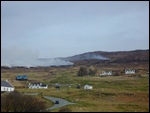
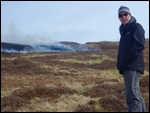
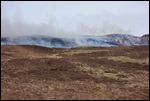



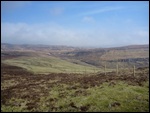
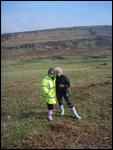
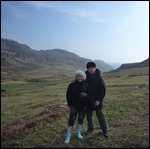
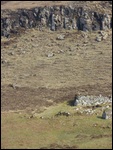
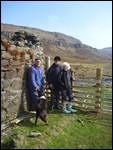
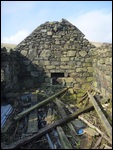
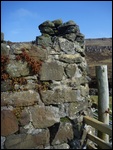

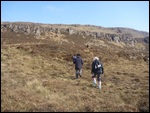
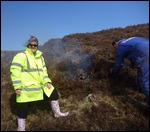
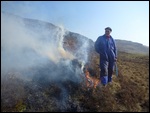
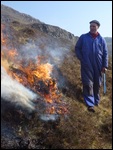
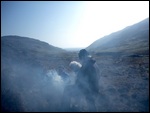
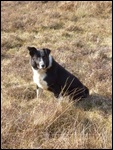
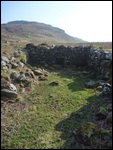
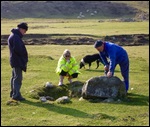
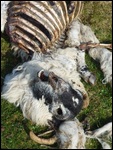
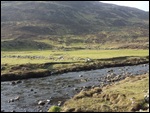
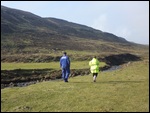

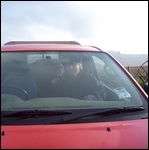
2025-05-23